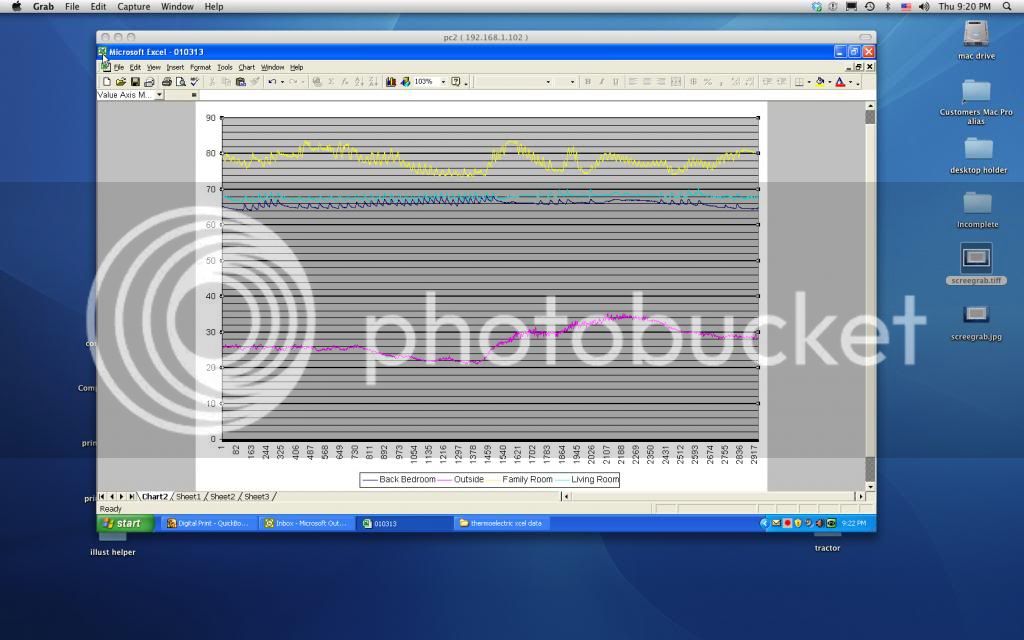smokee
ArboristSite Operative
Being a part-time, half a$$ inventor, I decided to figure an efficient way of getting the heat generated by my new insert throughout our bi-level, 1600 sq ft home. No easy task considering our floor plan and the fact that the house was built in 1976 and only a little insulation was part of the building process. Lol.
The first task was to figure out the way both the gas furnace and the insert functioned together and how the heat is distributed - I would love to have the furnace not run at all when I'm burning. To do this I used a system that I built years ago when I was making a 12 volt electric cup holder that both heated and cooled a beverage. It's a small circuit board that plugs into a serial port on a pc and has 4 Texas Instrument temp sensors that are accurate to within +/- .05* F. When working on the cup holder, I used each sensor to monitor a different part of the cup holder. In my home, I used each of the four sensors at different locations throughout the house - one in the further most bedroom (which suffers immensely when wood is burning), one in the upstairs living room, one outside for outside temps and one in the family room with the insert. After 24 hours of running I generated this graph.

The idea is to experiment with different ideas and see what works best. This first 24 hours was the insert running and the furnace set to 70*f (the furnace thermo's about 2 degrees off) as a baseline then try running the furnace fan and various other ideas.
Don't misunderstand, I'm not obsessed in anyway about this. I've got the kids involved so hopefully they'll get something out of it. And, since its Januaury and cold in Pennsylvania, it's turned into a fun thing to do with the boys.
The first task was to figure out the way both the gas furnace and the insert functioned together and how the heat is distributed - I would love to have the furnace not run at all when I'm burning. To do this I used a system that I built years ago when I was making a 12 volt electric cup holder that both heated and cooled a beverage. It's a small circuit board that plugs into a serial port on a pc and has 4 Texas Instrument temp sensors that are accurate to within +/- .05* F. When working on the cup holder, I used each sensor to monitor a different part of the cup holder. In my home, I used each of the four sensors at different locations throughout the house - one in the further most bedroom (which suffers immensely when wood is burning), one in the upstairs living room, one outside for outside temps and one in the family room with the insert. After 24 hours of running I generated this graph.

The idea is to experiment with different ideas and see what works best. This first 24 hours was the insert running and the furnace set to 70*f (the furnace thermo's about 2 degrees off) as a baseline then try running the furnace fan and various other ideas.
Don't misunderstand, I'm not obsessed in anyway about this. I've got the kids involved so hopefully they'll get something out of it. And, since its Januaury and cold in Pennsylvania, it's turned into a fun thing to do with the boys.





